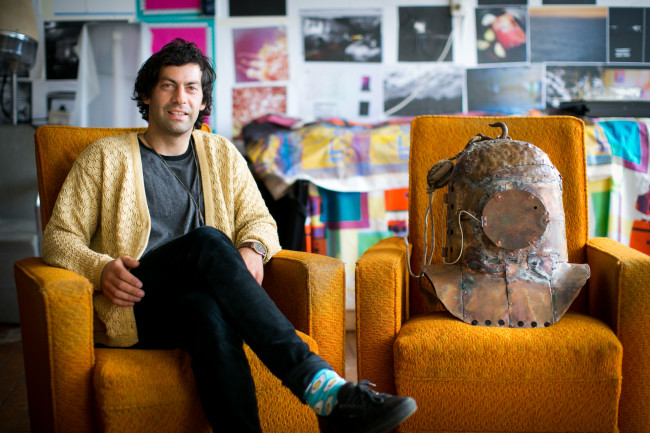
“Surfing has always focussed the cultural beam towards California and the ripples move outward via the internet,” says Ted Whitaker, electronic arts technical teacher at the Dunedin School of Art.
Multi-media videographer and art researcher, Ted Whitaker, has long been interested in media archaeology and combining media from different devices, sources and origins. His work, Species Dysphoria, a surf film created for the Edie Stevens (Eves) New Zealand tour, was shot on two cameras in two very distinct formats, reflecting two different time periods. In addition, the video was shot in the disparate locations of Kaikoura, New Zealand and Los Angeles, California. The result is a piece which shows the “colonisation of culture and the collision between the foreign and the familiar”. Species Dysphoria unravels the layers of New Zealand’s surfing subculture identity derived from a ‘Malibu’ surfing ideology, and reflects the geographical isolation of our nation. Though mimicking elements of Californian surf culture it shows a distinctive difference inherent within Aotearoa.
The first camera, a modern DSLR provides a rich cinematic quality, representative of 2015, whereas the 90’s Sony hi8 camera shot low resolution scenes, with a lot of analogue noise from dust, a defect of the magnetic video tape. The visible difference was integral to film and the concept of dysphoria.
The project was a labour of love for Whitaker, who is a keen surfer and consumer of surf films himself. Species Dysphoria was widely accepted by surfing audiences, being selected for the Aotearoa International Surf Festival. However, interestingly, it was also appreciated by art audiences around the globe being selected for the Alchemy Moving Image Festival in Scotland. As Ted says, “This indicates that there is a cross-over and a resonance between the two audiences.”
Whitaker, T. (2014). Species Dysphoria. [Film/Video] Film selected for the Aotearoa International Surf Film Festival and Alchemy Moving Image Festival, Scotland. http://vimeo.com/80665058
